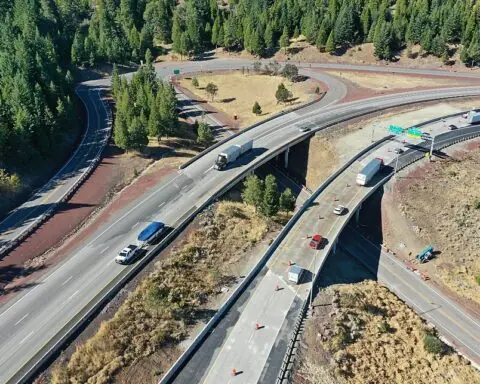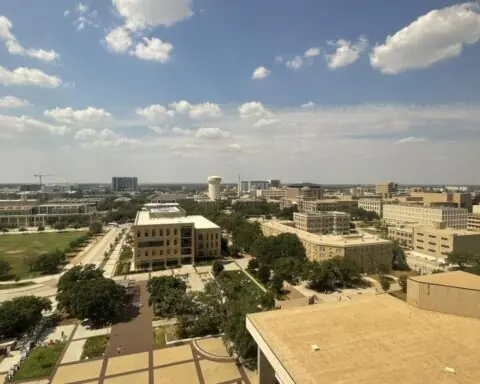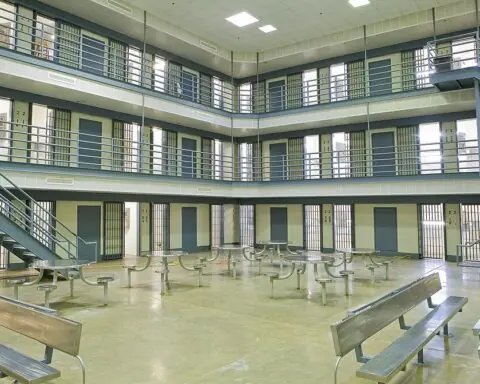The Michigan State Transportation Commission (STC) has officially approved the transportation department’s $16.1 billion Five-Year Transportation Program (5YTP). The document will now be transmitted to the Michigan Legislature, state budget director and the House and Senate fiscal agencies by March 1, 2026.
The 5YTP will be used to connect the Michigan Department of Transportation’s (MDOT) long-range goals and strategies with programming, performance measures and budget targets for projects featured in the State Transportation Improvement Program (STIP). A series of planned state-maintained roads, bridges and facilities projects included in the Trunkline Highway program are included as key components in the document.
The document covers all project aspects of the state’s trunkline system, alongside additional components of the transportation network, including bus, rail, aviation, marine and active transportation. The estimated $17.3 billion in total state and federal funding for the 5YTP is divided into five categories for planned projects:
- Highway – $11.9 billion.
- Bus and Marine Public Transportation – $3.4 billion.
- Rail and Ports Public Transportation: $1.1 billion.
- Aeronautics – $900 million.
While the total available investment budget for highway projects is slotted for $11.9 billion, MDOT anticipates that it will only spend $10.7 billion on projects over the next five years. The lion’s share of these investments will primarily support repairing and rebuilding critical roads and bridges.
The department plans to replace or repair 56 bridges per year. In addition, it will improve approximately 1,431 lane miles annually. These improvements will be split between enhancing and replacing 211 lane miles each year and extending the life of the remaining 1,220 lane miles through preventative maintenance.
MDOT’s investments in bus and marine public transportation will total $3.4 billion. The allocated funding will support efforts to preserve local bus operations for transit and sustain existing services and infrastructure by regularly replacing vehicles, renovating transit facilities, replacing aging ferry boats and implementing innovations to improve efficiency and mobility accessibility.
The department will also preserve and potentially expand intercity bus service and terminal development. Additional work consists of demolishing the Detroit Intercity Bus Facility, continuing northern subsidized routes and leveraging technology and innovative service models to enhance local and regional mobility.
MDOT’s $1.1 billion investment in the Passenger Rail, Freight Rail and Ports Program will enable officials to support intercity passenger rail services and safety at railroad crossings among other planned projects. Priority initiatives featured in the 5YTP include:
- Providing Amtrak with support and equipment for three routes.
- Maintaining the Kalamazoo-Dearborn corridor to support passenger train speeds of up to 100 mph.
- Modifying track curves and signals across the state.
- Conducting a study of a new intercity passenger connection in Battle Creek.
- Kickstarting the engineering and environmental review process for replacing four bridges.
- Improving three existing corridors and potentially creating a new corridor serving Grand Rapids, Lansing and Detroit.
- Improving local crossings, including 40-60 surface improvements and enhancing warning devices at 30-40 locations.
- Improving state trunkline crossings and/or device upgrades at 20-25 locations.
- Implementing capacity, safety and rail enhancements across the 530-mile freight-only system, including replacing the Manistee River Bridge.
The final major investments totaling $900 million will go toward the Aeronautics Program. Planned efforts will target critical infrastructure preservation, specifically pavement remediation and improvement. MDOT will also help reduce system and facility deficiencies, implement the Air Service Program and support emerging aviation and advanced air mobility infrastructure.
Photo by Ashley from Pexels
This story is a part of the weekly Government Contracting Pipeline digital news publication. See more of the latest government contracting news here. For more national government news, check Government Market News daily for new stories, insights and profiles from public sector professionals.













